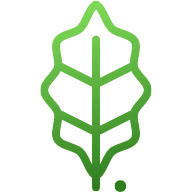6 Innovative Technologies in Arboriculture
Arboriculture is undergoing a technological revolution, transforming the way trees are cared for and managed. From advanced imaging techniques to artificial intelligence, new tools are enabling arborists to detect hidden issues, monitor forests with unprecedented precision, and train the next generation of tree care professionals. These innovative technologies are not only improving the efficiency of arboriculture practices but also contributing to the long-term health and sustainability of our urban and natural forests.
- Sonic Tomography Reveals Hidden Tree Health Issues
- Drones Enhance Forest Management and Monitoring
- LiDAR Scanning Provides Precise Tree Measurements
- AI Algorithms Detect Early Signs of Disease
- IoT Sensors Enable Real-Time Tree Health Tracking
- Virtual Reality Transforms Arborist Training Programs
Sonic Tomography Reveals Hidden Tree Health Issues
One innovative technique I'm excited about in arboriculture is the integration of sonic tomography for tree health assessments. This non-invasive technology uses sound waves to map the internal structure of a tree, helping detect decay, cavities, or structural weaknesses without having to cut into the tree itself. It's a real game-changer for assessing mature or heritage trees that are high-value or hold sentimental significance. With over 15 years in the field and a background in horticulture, I've seen too many instances where internal rot or hidden structural issues weren't picked up until it was too late. With sonic tomography, we're now able to make proactive, data-driven decisions about tree care, ensuring safety and long-term health while avoiding unnecessary removals.
A great example of this came from a property I worked on where a large eucalypt sat right near a family home. The tree looked healthy from the outside, but the client had concerns about its stability after recent storms. With the training and experience I've built up over hundreds of projects, I recommended a sonic tomography scan. The results showed significant internal decay that wasn't visible externally. Because we caught it early, we were able to carry out targeted pruning and bracing to reduce stress on the compromised sections, rather than removing the tree entirely. That tree is still standing strong today, and the clients were thrilled to preserve such an important part of their landscape. It's moments like that where the value of combining new tech with experience really shows.
Drones Enhance Forest Management and Monitoring
Drone-based aerial mapping is revolutionizing forest management in arboriculture. These unmanned aerial vehicles can cover large areas quickly, capturing high-resolution images and data. This technology allows arborists to assess tree health, identify potential hazards, and plan maintenance activities more efficiently.
It also helps in monitoring forest density, tracking changes over time, and detecting early signs of disease or pest infestations. By providing a bird's-eye view of the forest, drones enable more accurate and timely decision-making in forest management. Consider incorporating drone technology in your arboriculture practices to improve efficiency and forest health monitoring.
LiDAR Scanning Provides Precise Tree Measurements
LiDAR scanning has become an invaluable tool for precise tree measurements in arboriculture. This technology uses laser light to create detailed 3D models of trees and forest structures. It can accurately measure tree height, canopy spread, trunk diameter, and even individual branch dimensions. LiDAR scanning is particularly useful for assessing hard-to-reach or dangerous areas without putting arborists at risk.
The data collected can be used to create detailed forest inventories, plan logging operations, or assess potential hazards. This level of precision allows for more informed decision-making in tree care and forest management. Explore the possibilities of LiDAR scanning to enhance your arboricultural assessments and planning.
AI Algorithms Detect Early Signs of Disease
Artificial Intelligence is transforming disease detection in tree foliage, offering new possibilities in arboriculture. AI algorithms can analyze images of leaves and bark to identify signs of disease or pest infestation with high accuracy. This technology can detect problems much earlier than the human eye, allowing for prompt intervention and treatment. AI-powered systems can also learn and improve over time, becoming more accurate in identifying various tree health issues.
This early detection capability can help prevent the spread of diseases and save entire forests from potential devastation. By reducing the need for manual inspections, AI also makes large-scale forest health monitoring more feasible. Consider integrating AI-powered disease detection into your arboricultural practices to stay ahead of potential tree health issues.
IoT Sensors Enable Real-Time Tree Health Tracking
Internet of Things (IoT) sensors are revolutionizing tree health monitoring in arboriculture. These small, interconnected devices can be placed on or near trees to continuously collect data on various health parameters. They can measure factors such as soil moisture, temperature, humidity, and even detect vibrations that might indicate structural weaknesses. This real-time data allows arborists to respond quickly to changing conditions and potential threats to tree health.
IoT sensors can also help in optimizing irrigation systems, reducing water waste while ensuring trees receive adequate hydration. By providing a constant stream of data, these sensors enable more proactive and precise tree care strategies. Explore the potential of IoT sensors to enhance your tree health monitoring and management practices.
Virtual Reality Transforms Arborist Training Programs
Virtual reality (VR) simulations are transforming arborist training, offering a safe and immersive learning environment. These simulations can recreate a wide range of scenarios that arborists might encounter in the field, from routine pruning to emergency response situations. Trainees can practice their skills and decision-making without the risks associated with real-world tree work. VR can also simulate different weather conditions, tree species, and equipment failures, providing a comprehensive training experience.
This technology allows for repeated practice and immediate feedback, accelerating the learning process and improving skill retention. By incorporating VR training, arboriculture programs can produce more confident and competent professionals. Consider implementing VR simulations in your arborist training programs to enhance safety and skill development.


